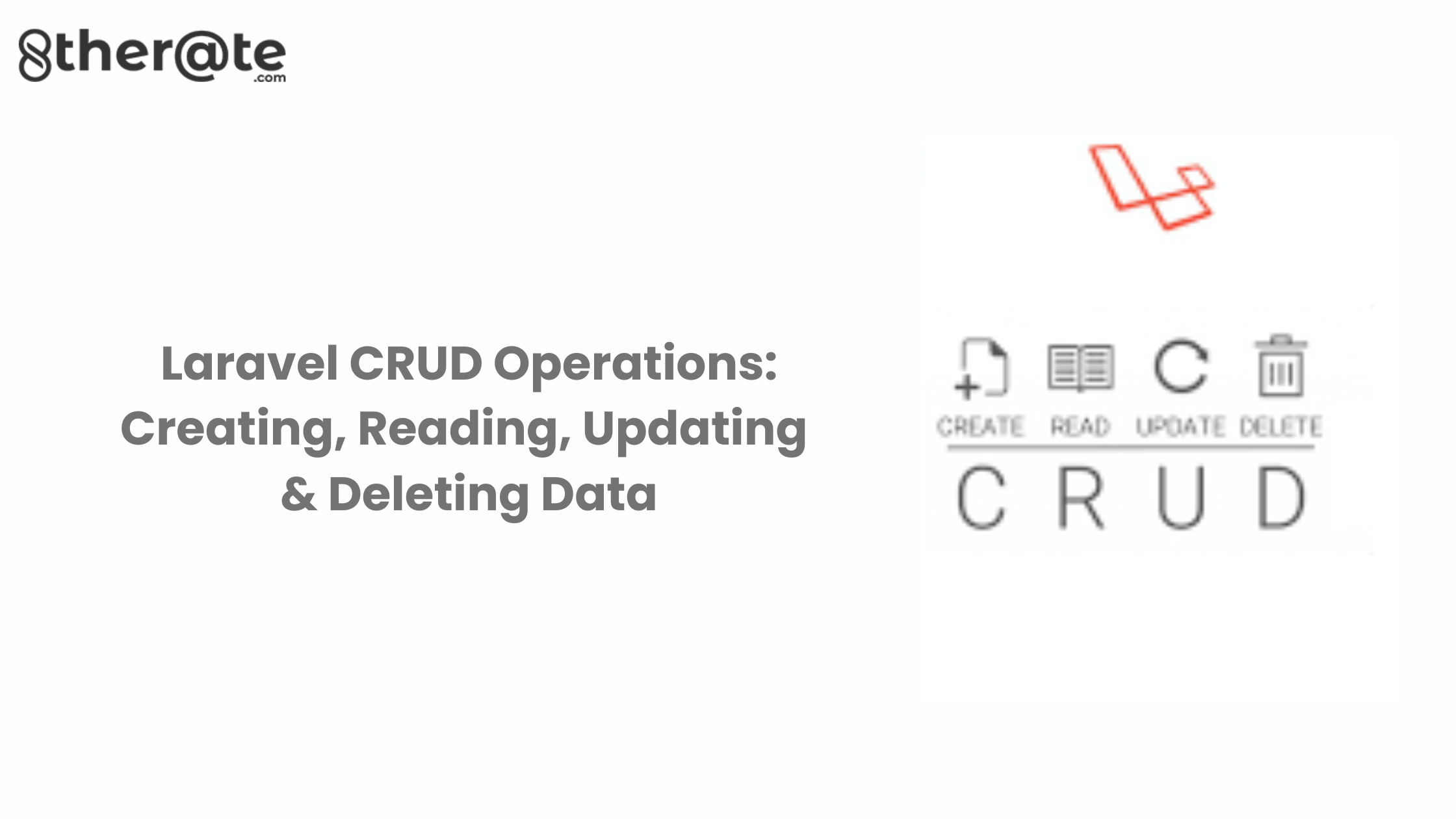Laravel
Laravel is a popular PHP web application framework known for its simplicity, flexibility, and elegance. One of the most common tasks in web development is performing CRUD (Create, Read, Update, Delete) operations on a database. In this blog, we’ll explore how to perform CRUD operations in Laravel.
Laravel is a powerful PHP framework widely used for developing web applications. laravel development services One of the fundamental requirements of any web application is to perform CRUD operations, which stands for Creating, Reading, Updating, and Deleting data. Laravel provides an elegant and intuitive way of implementing CRUD operations with built-in features and capabilities.
Creating data involves adding new records to the database while reading data involves fetching and displaying the data from the database. Updating data involves modifying the existing data while deleting data involves removing the data from the database.
custom laravel web development Laravel provides several ways of implementing these operations, including using the Eloquent ORM, Query Builder, or Raw SQL queries.
Eloquent ORM is Laravel’s default ORM that provides an easy-to-use and intuitive interface for working with databases. laravel framework development company allows developers to define relationships between database tables and provides various methods for performing CRUD perations.
The Query Builder is another option for working with databases that allow developers to construct SQL queries programmatically. custom laravel development Raw SQL queries are also available in Laravel for developers who prefer writing their own SQL queries.
In this article, we will explore the different ways of performing CRUD operations in Laravel using the Eloquent ORM, Query Builder, and Raw SQL queries.
laravel website development company We will cover the basics of database migrations, defining models, working with relationships, and performing validation on user input. By the end of this article, you will have a solid understanding of how to implement CRUD operations in Laravel and be able to build robust web applications.
Creating Data
The first step in creating data in Laravel is to set up a model, which represents a database table.
php artisan make: model Product
This will create a “Product.php” file in the “app/Models” directory. The model represents a database table and contains properties that correspond to the table columns.
Next, we need to create a migration file to define the table structure. Use the “make: migration” Artisan command:
php artisan make: migration create_products_table — create=products
In the migration file, define the table columns using the Schema builder:
public function up()
{
Schema::create(‘products’, function (Blueprint $table)
{
$table->id();
$table->string(‘name’);
$table->integer(‘price’);
$table->timestamps();
});
}
In this example, we define an “id” column (which is automatically created by Laravel), a “name” column of type string, a “price” column of type integer, and two timestamp columns (“created_at” and “updated_at”).
php artisan migrate
Now that we have set up the model and the table, we can create a new product record. laravel development company In the controller, use the “create” method of the model to create a new record:
public function store(Request $request)
{
$product = new Product;
$product->name = $request->input(‘name’);
$product->price = $request->input(‘price’);
$product->save();
}
In this example, we create a new instance of the Product model, set the “name” and “price” properties to the values submitted in the request, and save the record.
Reading Data
To retrieve data from the database, use the “all” method of the model to get all records:
$products = Product::all();
This will return a collection of Product objects. You can also use the “find” method to retrieve a specific record by its ID:
$product = Product::find(1);
This will return the Product object with ID 1. laravel development services In the controller, you can pass the retrieved data to the view:
public function index()
{
$products = Product::all();
return view(‘products.index’, [‘products’ => $products]);
}
This will pass the $products variable to the “index.blade.php” view file. laravel web development services In the view file, laravel web development services you can loop through the collection and display the data:
@foreach ($products as $product)
<div>
{{ $product->name }}
{{ $product->price }}
</div>
@endforeach
Updating Data
To update a record, first retrieve the record using the “find” method:
$product = Product::find(1);
Then, update the properties and call the “save” method:
$product->name = ‘New Product Name’;
$product->price = 100;
$product->save();
you can utilize the “update” procedure to rework.
Conclusion
Laravel provides developers with a powerful and efficient way to perform CRUD operations. laravel web development company With the help of its built-in functionalities and ORM, developers can easily create, read, update, and delete data from their databases.
Laravel’s syntax is easy to learn and understand, making it an ideal choice for beginners and experienced developers. Additionally, Laravel offers features such as routing, authentication, and middleware that further simplify building robust web applications.
Whether you are building a simple blog or a complex web application, Laravel’s CRUD operations provide a solid foundation for managing data.
laravel development services By following the best practices and principles outlined in this guide, you can create secure, scalable, and efficient applications that meet the needs of your users. If you are looking for site development services and want to update or create sites then contact 8therate.



